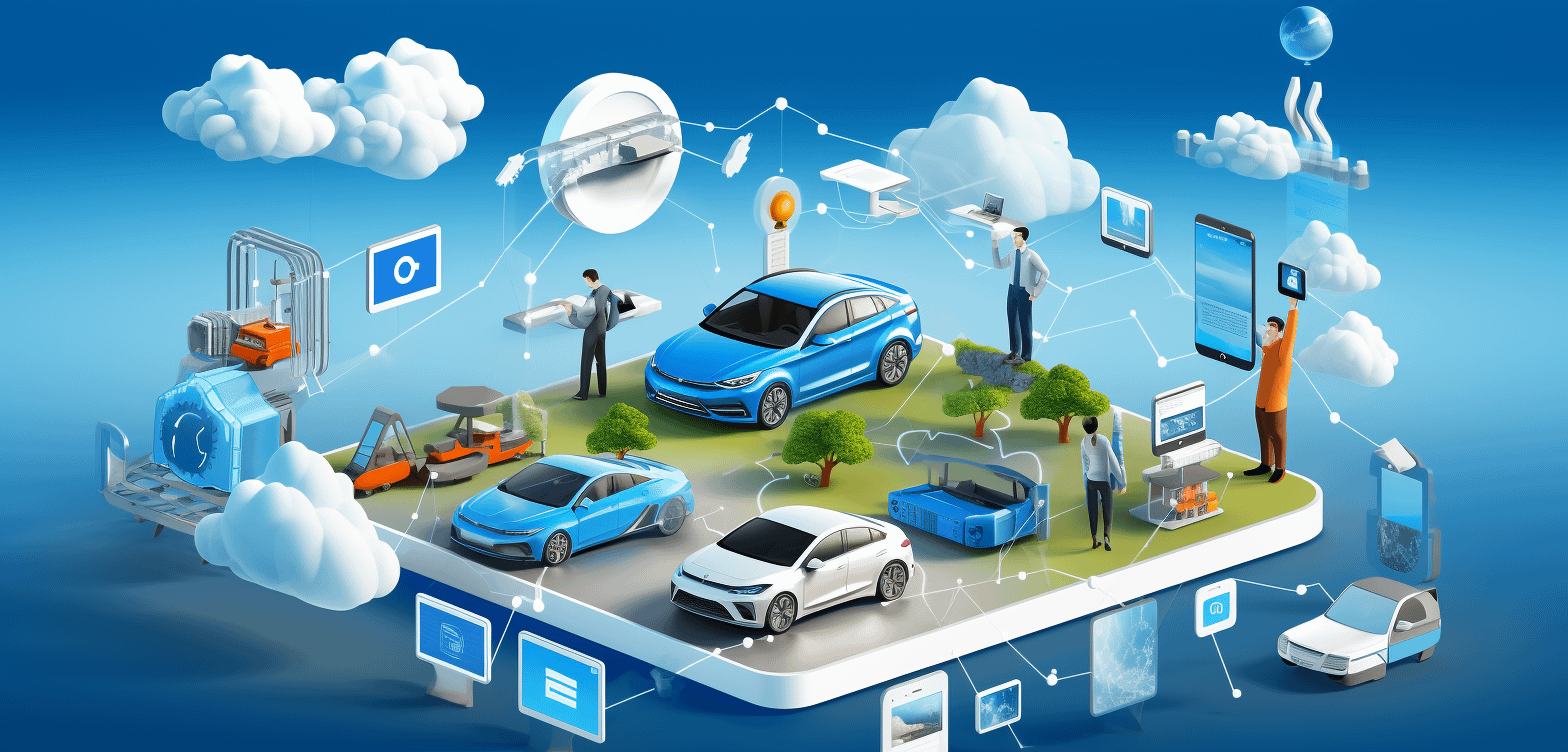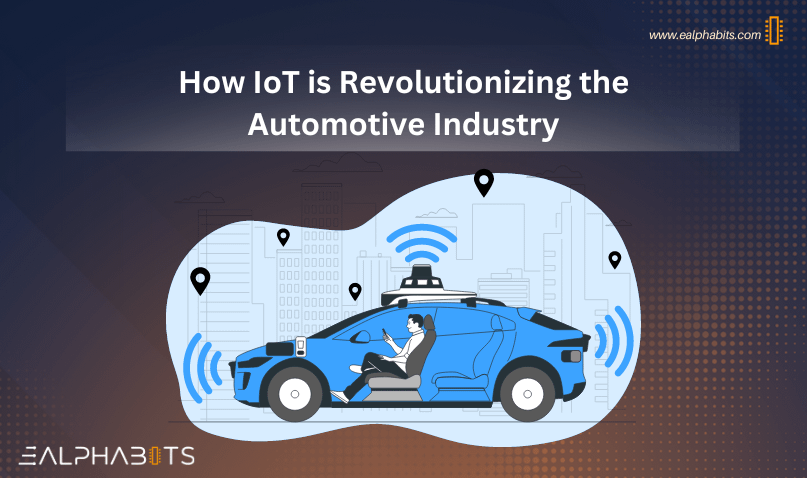
Introduction to 5G and IoT

Welcome to the fast lane of technological advancement where 5G and IoT are reshaping the way we connect with our vehicles. Imagine a world where your car becomes more than just a mode of transportation, but a smart companion that anticipates your needs and keeps you safe on every journey with smart vehicle connectivity. In this blog post, we will explore how these cutting-edge technologies are revolutionizing vehicle connectivity, paving the way for a safer, smarter, and more efficient driving experience. So buckle up as we dive into the future of connected cars powered by 5G and IoT!
The Impact of 5G and IoT on Vehicle Connectivity
Picture this: a seamless driving experience where your vehicle is not just a mode of transportation but a smart companion that anticipates your needs. With the integration of 5G and IoT technologies, this vision is becoming a reality.
One significant impact is the enhancement of safety features in vehicles. Real-time data transmission allows for quicker response times in emergency situations, making roads safer for everyone.
Moreover, navigation systems have been revolutionized with improved accuracy and real-time updates. Say goodbye to getting lost or stuck in traffic jams – your smart vehicle will find the most efficient route for you.
Additionally, maintenance and repairs are now more efficient with predictive analytics provided by IoT sensors. Your car can alert you about potential issues before they escalate, saving you time and money in the long run.
Furthermore, autonomous driving capabilities are being unlocked thanks to 5G connectivity. Imagine sitting back and relaxing while your car takes care of the driving – it’s no longer science fiction but a practical possibility with these advancements.
Improved Safety Features

With the integration of 5G and IoT in vehicles, safety features have taken a significant leap forward. These advancements are revolutionizing how we perceive road safety by enabling real-time communication between vehicles and infrastructure.
One key aspect of improved safety features is the ability for vehicles to communicate with each other, sharing data about road conditions, traffic patterns, and potential hazards. This allows for early warnings and proactive measures to prevent accidents.
Moreover, connected car systems can now detect drowsy driving behavior or sudden changes in road conditions, alerting drivers to take necessary precautions. In emergency situations, these systems can even engage automatic braking or steering control to avoid collisions.
The enhanced safety features powered by 5G and IoT technology are paving the way for a safer driving experience for all motorists on the road.
Enhanced Navigation Systems
Imagine driving without ever getting lost again. With 5G and IoT technologies, enhanced navigation systems in vehicles are taking the driving experience to a whole new level. These advanced systems provide real-time traffic updates, alternative route suggestions, and even predictive maintenance alerts based on vehicle data.
Picture this: seamlessly integrating your calendar with your car’s navigation system to automatically suggest the best route based on your schedule. No more fumbling with paper maps or outdated GPS directions; these smart navigation systems are intuitive and user-friendly.
Additionally, with the power of 5G connectivity, these systems can access vast amounts of data instantly to provide accurate mapping information and up-to-the-minute details on points of interest along your route. Say goodbye to missing exits or searching for gas stations in unknown areas – your vehicle will have you covered every step of the way.
In essence, enhanced navigation systems supported by 5G and IoT are transforming how we travel from point A to point B.
Increased Efficiency in Maintenance and Repairs
The integration of 5G and IoT in vehicles has brought about a significant improvement in maintenance and repairs. With real-time data collection and analysis, connected car systems can now detect potential issues before they escalate into major problems. This proactive approach not only saves time but also reduces the overall cost of repairs for vehicle owners.
Moreover, smart vehicle connectivity allows for remote diagnostics, enabling mechanics to pinpoint specific issues without the need for physical inspection. This streamlines the repair process and ensures that vehicles are back on the road faster than ever before. Additionally, predictive maintenance based on data analytics helps prevent unexpected breakdowns, leading to increased reliability and efficiency.
The enhanced efficiency in maintenance and repairs made possible by 5G and IoT technologies is transforming the way we care for our vehicles.
Opportunities for Autonomous Driving
As 5G and IoT continue to transform vehicle connectivity, the opportunities for autonomous driving are expanding at a rapid pace. With the power of real-time data processing and communication, vehicles can now communicate seamlessly with each other and their surroundings. This opens up possibilities for safer roads, reduced traffic congestion, and increased efficiency in transportation.
Autonomous driving technology relies heavily on the availability of high-speed internet connections provided by 5G networks. These networks enable vehicles to make split-second decisions based on vast amounts of data collected from sensors, cameras, and GPS systems. As a result, self-driving cars are becoming more adept at navigating complex road conditions and interacting with other vehicles on the road.
The integration of IoT into autonomous vehicles also plays a crucial role in enhancing safety features such as collision avoidance systems and adaptive cruise control. By leveraging connected car systems, autonomous vehicles can proactively respond to potential hazards on the road before human drivers even notice them.
The future of autonomous driving looks promising as advancements in 5G technology and IoT capabilities continue to revolutionize smart vehicle connectivity.
Challenges and Concerns with 5G and IoT in Vehicles
As we delve into the realm of 5G and IoT in vehicles, it’s crucial to acknowledge the challenges and concerns that come hand in hand with these cutting-edge technologies. One major concern is cybersecurity – as vehicles become more connected, they also become more vulnerable to cyber attacks. Ensuring robust security measures is paramount to safeguard sensitive data and prevent unauthorized access.
Another challenge lies in infrastructure readiness. While 5G offers lightning-fast speeds, there are still areas lacking adequate network coverage, which could hinder seamless connectivity on the road. Moreover, integrating new technologies into existing vehicle systems can pose compatibility issues and require significant updates or upgrades.
Additionally, there are privacy concerns surrounding the collection and utilization of vast amounts of data from IoT devices within vehicles. Striking a balance between innovation and protecting user privacy remains a pressing issue that requires careful consideration moving forward.
Future Possibilities for Vehicle Connectivity

As technology continues to advance at a rapid pace, the future of vehicle connectivity holds limitless possibilities. With the integration of 5G and IoT, we can expect even more seamless communication between vehicles and their surroundings. Imagine cars that can communicate with traffic lights to optimize traffic flow or automatically reroute based on real-time data.
Furthermore, enhanced connectivity could lead to improved energy efficiency by allowing vehicles to coordinate with smart grids for optimal charging schedules for electric cars. Additionally, predictive maintenance systems could be developed using IoT sensors to detect potential issues before they become costly problems.
The evolution of connected car systems opens up opportunities for personalized in-car experiences tailored to individual preferences. From entertainment options to climate control settings, the possibilities are endless. As we look ahead, it’s exciting to envision a world where vehicles are not just modes of transportation but integrated smart spaces that cater to our every need and enhance our overall driving experience.
Conclusion
As 5G and IoT continue to evolve, the future of vehicle connectivity looks promising. The combination of these technologies is revolutionizing the automotive industry, enhancing safety features, navigation systems, maintenance processes, and paving the way for autonomous driving.
While there are challenges and concerns to address regarding cybersecurity and privacy issues with increased connectivity in vehicles, the benefits far outweigh the risks. As technology advances further, we can expect even more innovative solutions that will transform how we interact with our vehicles.
With continuous advancements in 5G and IoT capabilities, smart vehicle connectivity is set to become more seamless, efficient, and integrated into our daily lives. The possibilities for enhanced driver experiences and improved road safety are endless as we embrace this new era of connected car systems.
The future of vehicle connectivity is here – fasten your seatbelts for a ride towards smarter and safer roads ahead!
To know more about smart vehicle connectivity, visit IoT Insider. For more automobile, visit QAWire


